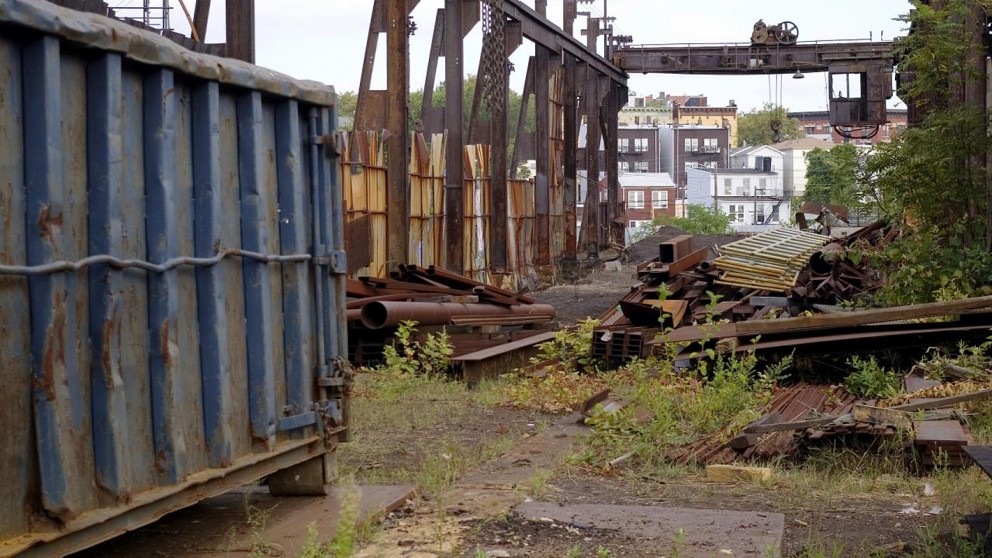Cleaning Up Brownfields Benefits Nearby Property Values

Hundreds of thousands of U.S. commercial and industrial sites are contaminated, with estimated cleanup costs running to the billions. But do the benefits of cleaning up these so-called brownfield sites outweigh the costs? In a blog post first published by the London School of Economics, NC State University’s Dr. Laura Taylor, director of the Center for Environmental and Resource Economic Policy, explains new research that addresses that question:
The U.S. Environmental Protection Agency estimates over 450,000 properties are environmentally contaminated to such a degree that reuse or redevelopment of the property is likely to be hindered. Although the vast majority of these so-called “brownfields” are privately owned commercial and industrial properties, cleanup costs are often borne partially or wholly by the public sector.
While it is not possible to assess the total costs of cleaning up the nation’s contaminated sites, it is fair to say the costs are likely to be enormous given the scope of the problem. A striking example of these costs is seen in over 1,000 hazardous waste sites that are listed on the EPA’s National Priorities List – a registry of the nation’s most severely contaminated sites. Recent estimates of cleanup activities by the EPA at 36 of these sites alone will cost more than $4 billion. While the EPA attempts to recover costs from responsible parties, only partial cost recovery has been possible historically. Given the enormity of these costs, a natural question to ask, especially when public expenditures support cleanup, is do the benefits of cleanup outweigh the costs?
To partially answer this question, the EPA and state agencies charged with cleanup of hazardous sites often seek to measure one potentially large benefit of cleanup: the increase in property values around a site that are possible once it has been remediated through removal of the environmental contaminates. Many studies have shown that hazardous waste sites negatively impact residential properties that are in close proximity to the site, sometimes reducing property values by over 10 percent relative to comparable homes. Logic would suggest that once a site has been cleaned up, housing values nearby should rebound. However, the evidence has not always shown this to be the case. Some studies have suggested that property values only partially rebound after a site is remediated, indicating long-term stigmatization of neighborhoods is possible from past environmental contamination.
My co-authors, Daniel Phaneuf and Xiangping Liu, and I examined the stigma question by collecting information on all commercial and industrial properties (which I’ll simply call “commercial properties”) in the Twin Cities of Minneapolis and Saint Paul, Minnesota. We collected location information and environmental status for over 8,000 commercial properties in the region, and matched them to sales data for over 150,000 residential single-family homes.
Using homes that are not near any type of commercial property as our benchmark, we find that homes close to a contaminated commercial site sell for approximately 8 percent less than benchmark homes. However, we believe part of this negative impact is likely due to the fact that the neighbor is a commercial property and not the environmental contamination per se. This is because we also find that homes near clean commercial properties (those that have never had any known environmental contamination) also sell for a discount compared to the benchmark homes, but only by an average of 2 to 3 percent. Together, these results imply that environmental contamination has a significant additional negative influence on nearby residential property values beyond those that are associated with clean commercial properties.
The good news is that we also find that once hazardous wastes are removed from a site, the discount associated with being located close to the site is reduced. Approximately 64 percent of the hazardous sites in our sample were remediated during the study period. We find that sales prices rebounded around sites that were remediated so that they were ultimately no different than sales prices of homes around clean commercial properties. In other words, we could not find any evidence that homes suffered “stigma” from being near previously contaminated sites after the sites were remediated.
What do these results mean for policy makers seeking to measure the benefits and costs of proposed hazardous waste cleanups involving public funds? The good news is that our work suggests that any negative impacts from a contaminated site are likely to be removed by cleanup. However, our results also imply a note of caution is in order. It is not sufficient to just measure the housing value discounts associated with a particular site and assume this amount can be recovered if the site is remediated. We need to make sure we determine how the post-cleanup land-use of the site affects property values. Assuming post-cleanup land use is the same as pre-cleanup, then the negative effects of a commercial neighbor must be incorporated into the analysis so that the benefits of cleanup are not overstated.
The post, shared through a Creative Commons license, is based on the paper, ‘Disentangling property value impacts of environmental contamination from locally undesirable land uses: Implications for measuring post-cleanup stigma’, in the Journal of Urban Economics.
- Categories: